Panch Kedar Yatra
The five Kedar lies in the valleys between the rivers Bhagirathi and Alaknanda. The term Kedar itself means a natural rock formation or a glacial moraine. According to legend, Himalayas Kedarnath, the chief seat of the Panch Kedar, come into being during the period when the five Pandava brothers were asked to seek Shiva's blessings, purging them off sin of fratricide, or killing their cousin brothers in the terrifying battle of Kurukshetra. Shiva disguised himself as a bull and started to plunge underground when he was spotted by Pandavas. No wonder the natural rock formation that is worshipped here resembles the rump of bull. The other four places where Shiva is worshipped take their appearance from different part of his body - the navel at Madmaheshwar, the arm at Tungnath, the face at Rudranath, and the matted hair at Kalpeshwar.
Kedarnath
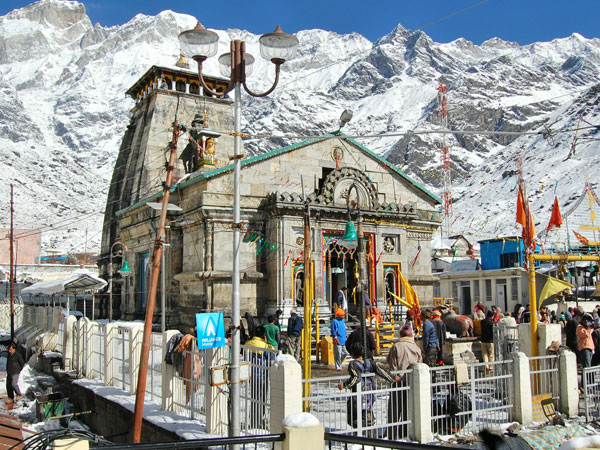
The holiest of Shiva's shrines is likened to gold among base metals so that every pilgrim finds peace here, and it is said that devotees who die here become one with Shiva himself. The temple of Kedarnath, located at a height of 3,581 mts, stand at the head of the Mandakini river, with Kedarnath peak keeping vigil above it.
The temple is dedicated to the Sadasiva or invisible form of Shiva, and is represented by a natural rock formation. Beyond the temple is the highway to heaven, called Mahapanth
Madmaheshwar
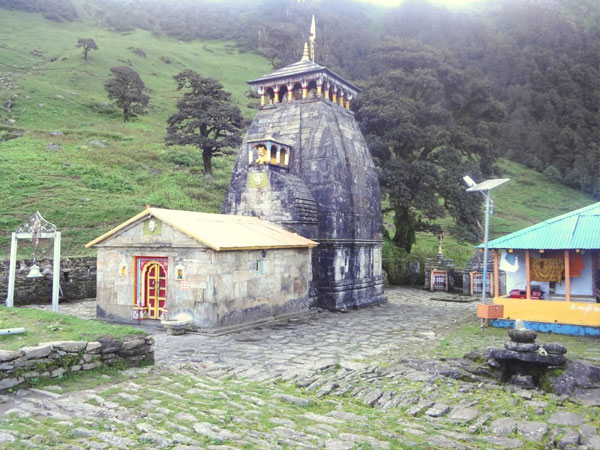
Shiva is worshipped at Madmaheshwar in the form of navel - shaped lingum. Located at base of Chaukhamba peak, at an altitude of 3,289 mts, the classic temple architecture belongs to the north - Indian style. So sanctified is the water here that even a few drops are considered sufficient for absolution.
The natural scenery is dramatically wild, with deep gorges and Himalayas valleys, mountainsides flung upwards towards the skies, and forests where the snow lies thick in winter, only to be replaced by a carpet of greenery in the summer. Kedarnath and Neelkanth peaks are also visible from here, the entire ring of mountains associated with the life and times of shiva. The confluences of two streams at Gaundar just short of the temple, is one of the prettiest spots in the region.
Tungnath
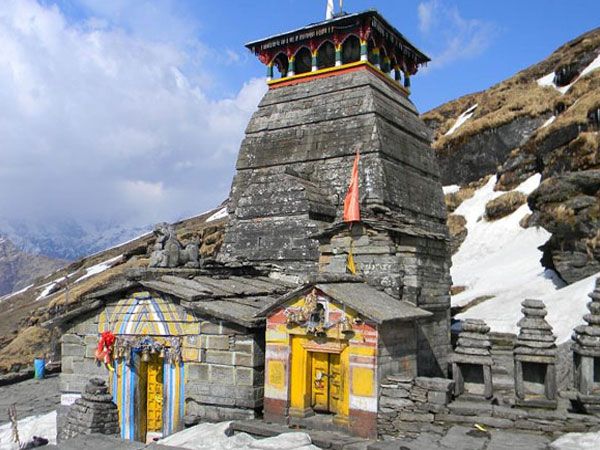
The sanctity of the region of Tungnath is considered unsurpassed. The peak of Tungnath is the source of three springs that from the river Akashkamini. At this temple at 3,680 mts, Shiva's arm is worshipped. The highest Hindu shrine in the Himalayas, 3kms uphill from Chopta, Tungnath is reached through a path that wends through alpine meadows and rhododendron thickets. An hour's climb from here leads to Chandrashila with its panoramic views. The entire journey and the shrine are located in some of the finest, most picturesque pocket of the Himalaya.
Rudranath
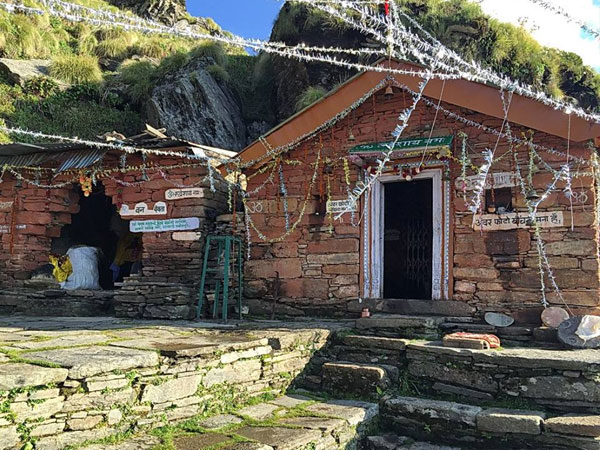
Devotees come to Rudranath to offer ritual obeisance it their ancestors, for it is here, at Vaitarani river that the soul of dead cross when entering another world. The temple of Rudranath at 2,286 mts, entails trekking through ridges at almost twice that height before reaching the meadow where it is located. Within the sanctum, Shiva's image is worshipped in the form of his face. The temple is surround by several pools - Surya Kund, Chandra Kund, Tara Kund, Manas Kund - while the great peaks of Nanda Devi, Trishul and Nanda Ghunti rear overhead.
Kalpeshwar
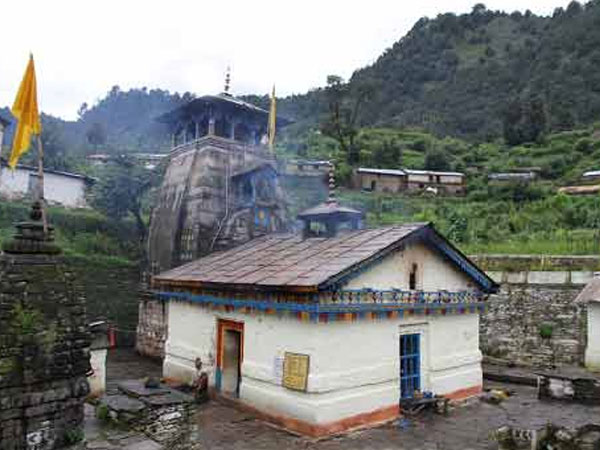
A favorite spots for sages who come here to meditate, following the precedent of Arghya who performed austerities and created the celebrated nymph, Urvashi, here, and the irascible Durvasha who meditated under the wish fulfilling tree, Kalpavriksha, Pilgrims pray at the small rock temple at a height of 2,134 mts. before the matted tresses of Shiva enshrined in rock in the sanctum sanctorum. The sanctum is preceded by a natural cave passage. Surrounded by thick forests and terraced fields in the Urgam valley, the temple is reached following a 10 km. long trek.
DAY TO DAY ITINERARY
Day 01 - Delhi - Rishikesh.
Day 2 - Rishikesh - Guptkashi / Gaurikund
Day 3 - Guptkashi / Gaurikund - Kedarnath 14 kms trek
Day 4 - Kedarnath - Guptkashi / Gaurikund 14 kms trek.
Day 5 - Rest.
Day 6 - Guptkashi / Gaurikund - Kalimath - Ransi 14 kms trek
Day 7 - Ransi - Madmaheshwar 17 kms trek.
Day 8 - Madmaheshwar Rest
Day 9 - Madmaheshwar - Ransi 17 kms trek ..
Day 10 - Ransi - Kalimath 14 kms trek - Chopta over night stay.
Day 11 - Rest.
Day 12 - Chopta - Tungnath - Chopta 4 kms trek one way.
Day 13 - Rest
Day 14 - Chopta - Sagar vai Taxi - further 10 kms trek .
Day 15 - 12 kms trek to Rudranath .
Day 16 - Rest.
Day 17 - Rudranath - Sagar 22 kms trek - Gopeshwar over night stay.
Day 18 - Gopeshwar - Pipalkoti Rest.
Day 19 - Pipalkoti - helong - Kalpeshwar 12 kms trek .
Day 20 - Kalpeshwar - Helong 12 kms trek - Pipalkoti.
Day 21 - Pipalkoti - Rishikesh
Day 22 - Rishikesh - Delhi.
Panch Badri Yatra
Yogadhyan Badri
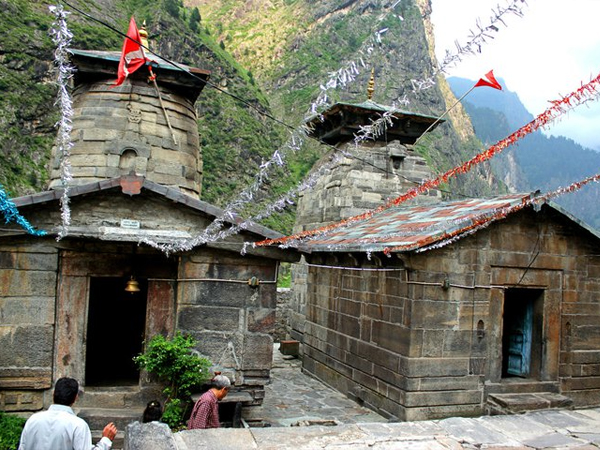
One of the Panch Badri shrines, Yogdhyan Badri is 1,920 meters above sea level and is situated in Pandukeshwar in Joshimath-Badrinath route nearby Govind Ghat. Yogdhyan Badri derives its name from the meditative position of the enshrined Badri idol. The Copper plate inscriptions found at Yogdhyan Badri have been helpful in digging out the history of the temple and Katyuri dynasty rule in the region. Surrounded by picturesque Himalayan peaks, pleasing weather and enchanting lake Surya Kund, Yogdhyan Badri is visited by thousands of Hindu pilgrims and adventure lovers every year.
Bhavishya Badri
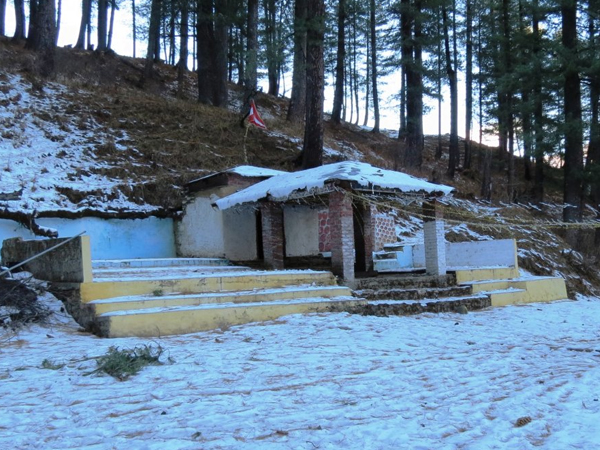
Bhavishya Badri, also spelt as Bhabisya Badri, 2,744 metres (9,003 ft), above sea level) is located in a village called Subhain at a distance of 17 kilometres (11 mi) from Joshimath, beyond Tapovan and approach is through dense forest, only by trekking. It is situated on an ancient pilgrim route to Mount Kailash and Manasarovar, along the Dhauli Ganges River. It is situated on the way from Tapovan to Lata in the Niti valley. Bhavishya Badri is connected by a motorable road to Saldhar,19 kilometres (12 mi), from Joshimath, beyond which a 6 kilometres (3.7 mi) trek is undertaken to reach the shrine. According to the legend of Bhavishya Badri (literally "Badri of the future"), when evil transcends the world, the mountains of Nara and Narayana would block up the route to Badrinath and the sacred shrine would become inaccessible. The present world will be destroyed and a new one established. Then, Badrinath will appear at the Bhavishya Badri temple and be worshipped here, instead of the Badrinath shrine.The shrine of Narasingh Badri at Joshimath is closely associated with the legend of Bhavishya Badri (see section below). Currently, the Bhavishya Badri has an image of Narasimha, the lion-faced incarnation and one of the ten avatars of Vishnu.
Vridh Badri
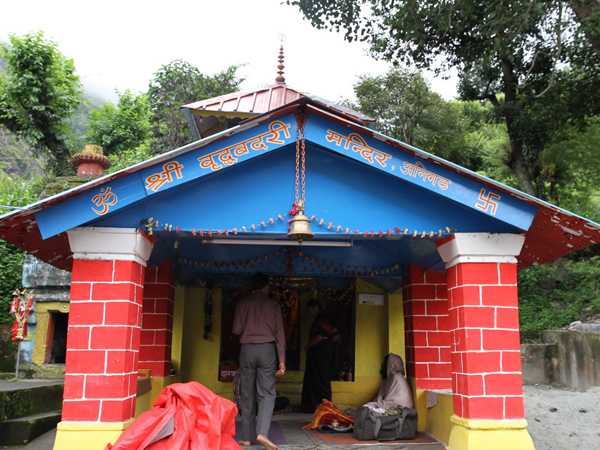
Vridha Badri- also spelled as Vriddha Badri or Bridha Badri - an austere shrine, is located in the Animath village ( 1,380 m (4,530 ft), above sea level) 7 km (4.3 mi), from Joshimath on the Rishikesh–Joshimath-Badrinath road. The Vridha Badri legend says that Vishnu appeared in the form of a Vridha or old man before sage Narada who performed penance here. Thus, the idol installed at this temple is in the form of an old man. According to legend, the image of Badrinath was carved by the divine craftsman Vishwakarma and worshipped here. At the advent of Kali yuga, Vishnu chose to remove himself from this place, later Adi Shankara found the partly damaged image in Narad-kund pond and established it at the central Badrinath shrine. According to legend, Badrinath was worshipped here by Adi Shankara, before his enshrinement at the Badrinath temple. The temple is open throughout the year. Brahmins from South India serve as chief priests in the temple.
Adi Badri
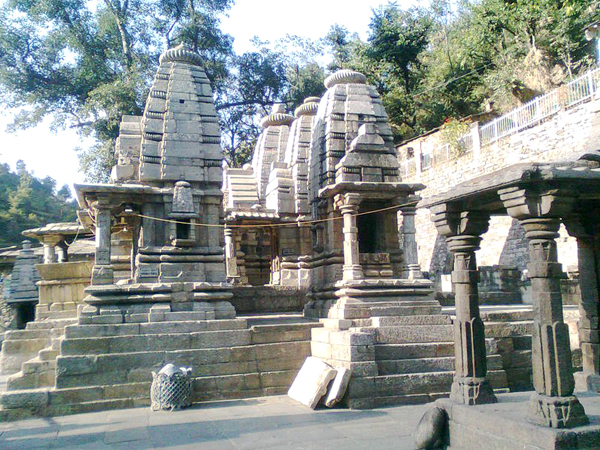
The Adi Badri is the first temple complex among the Sapta Badri temples is an ancient shrine dedicated to Vishnu and is one among a chain of 16 small shrines located in the hill ranges 17 kilometres (11 mi), beyond Karnaprayag (confluence of Pindar River and Alaknanda River in Chamoli district. Seven temples of this chain were built during the late Gupta period (5th century to 8th century). According to tradition, Adi Shankara is attributed as builder of all the temples. Adi Shankara is believed to have sanctioned these temples in order to spread Hinduism to every remote part of the country. In ancient times, when approach to the main shrine of Badrinath was closed due to weather conditions, pilgrims worshipped Vishnu at this temple.[citation needed] Adi Badri, also known as Helisera according to revenue records, is a tiny temple complex enclosed within a space of 14 metres (46 ft) X 30 metres (98 ft). The height of the temples vary from 2–6 metres (6.6–19.7 ft). The chief temple is dedicated to god Vishnu, which is built over a raised platform, with a small enclosure in a pyramidal form.
Badrinath
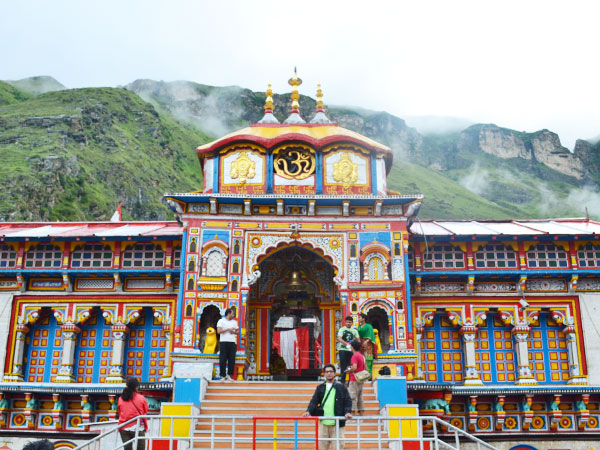
Badrinath is a Hindu holy town that is the most important of the four sites in India's Char Dham pilgrimage. Badrinath was re-established as a major pilgrimage site by Adi Shankara in the ninth century and in recent years; its popularity has increased significantly, with an estimated 600,000 pilgrims visiting during the 2006 season, against 90,676 in 1961. Badrinath has been mentioned as a holy place in Hindu scriptures for thousands of years. According to the Bhagavata Purana (3.4.22),"There in Badrikashram the supreme being (Vishnu), in his incarnation as the sages Nara and Narayana, had been undergoing great penance since time immemorial for the welfare of all living entities.
Duration : 08 Nights / 9 Days
Panch Badri Tour Cost : On Request
Sacred Yatra Panch Badri Travel Package Itinerary
Day 01 : Delhi – Haridwar (210 km/4-5 hrs approx). Upon arrival welcome to the guests and proceed to Haridwar by surface. Reach Haridwar and check-in at hotel. Later sightseeing of Haridwar and evening see Ganges Aarti from “Har-Ki-Pauri”. Overnight stay at hotel.
Day 02 : Haridwar – Rishikesh – Rudraprayag (165 km/8-9 hrs approx). After breakfast, proceed to Rishikesh, on arrival visit to Laxman Jhulla, Ram Jhulla, Triveni Ghat, Bharat Mandir etc, later continue to Rudraprayag. On arrival check-in at hotel. Overnight stay at hotel.
Day 03 : Rudraprayag – Pipalkoti (80 km/2-3 hrs approx).
After breakfast, visit the Koteshwar Mahadev Temple at Rudraprayag. Later proceed to Pipalkoti. On arrival check-in at hotel. Overnight stay at hotel.
Day 04 : Pipalkoti – Vishnuprayag – Badrinath Jee (84 km/2 hrs approx). After breakfast, prceed to Badrinath, on the way visit Vishnuprayag sangam. Later continue to Badrinath. On arrival check-in at hotel.
Day 05 : Badrinath Temple. Early morning, take a bath in Taptakund and have the darshan of Badrivishal. Later visit to nearby places, evening experience Aarti at Badrinath Jee Temple. Overnight stay at hotel.
Day 06 : Badrinath Jee – Pandukeshar – Yogdhyan Badri – Joshimath (44 km/2 hrs approx). After breakfast, proceed to Joshimath, on the way visit Yogdhan Badri Temple. Later continue to Joshimath, on arrival check-in at hotel. Overnight stay at hotel.
Day 07 : Joshimath – Saldhar – Bhavishya Badri – Joshimath (12 km drive & 06 km trek-one side). After breakfast, proceed to Syaldhar. Reach Syaldhar and start trek to Bhavishya Badri. On arrivalat Bhavishya Badri, visit the Narsingh temple and Shankracharya temple, later back to Joshimath. Overnight stay at hotel.
Day 08 : Joshimath – Virdha Badri – Adi Badri (92 Km/2-3 hrs approx). After breakfast, proceed to Adibadri via Karanpryag. On arrival check-in at hotel/Camps. OVernight stay at hotel/camps.
Day 09 : Adi Badri – Rishikesh – Delhi. After breakfast, proceed to Delhi via Haridwar Rishikesh. On arrival transfer the guests to Delhi Airport/Railway Station to board the flight/train for onward journey and tour terminates.
End of the Panch Badri Tour package